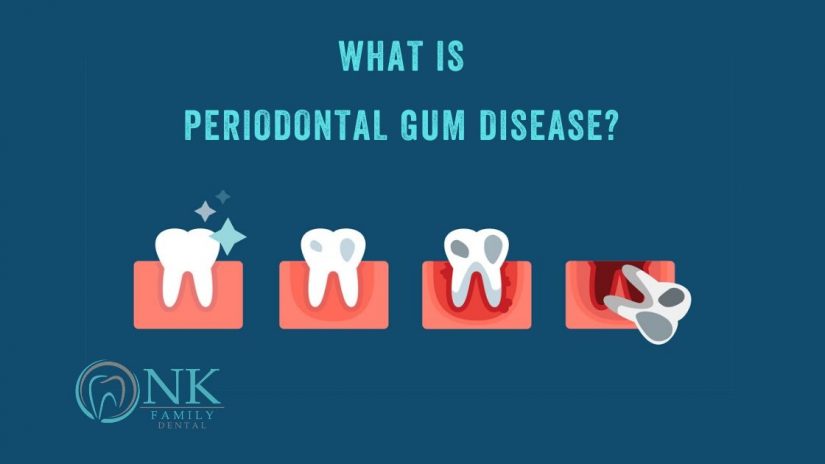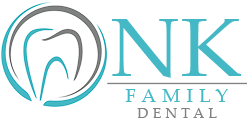
When you go to the dentist, you may only be thinking about the health of your teeth — but did you know your gums are equally as important to your oral health and your overall health? Poor oral hygiene can result in gum disease and many dental conditions, but it isn’t the only cause of gum disease. Therefore, it’s important to know your risk for developing gum disease, how to recognize the signs and what your treatment options may be. Fortunately, there are many ways to improve your oral hygiene and gum health both at home and with the help of an experienced periodontist.
Could You Have Gum Disease?
Even if you brush your teeth every day, you could still be at risk for developing gum disease, leading to effects such as tooth decay and tooth loss. In fact, most Americans don’t even know they have gum disease. While oral hygiene — which includes properly brushing your teeth at least twice daily and properly flossing at least once — can play a large role in whether you develop gum disease, there are also many potential causes not related to oral hygiene. Other causes of gum disease may include genetics and family history, hormones (particularly in pregnant women), stress, medical conditions (such as AIDS or cancer), medications that cause dry mouth, or smoking tobacco products.
How Can I Recognize Periodontal Disease?
Gum disease develops in different stages, with two primary stages: gingivitis and periodontitis, also known as advanced gum disease. The term periodontal disease is a broader way of referring to all forms of gum disease, including both gingivitis and periodontitis. Under the gum disease stage of periodontitis, there are three more categories: chronic periodontitis, aggressive periodontitis and necrotizing periodontitis.
Knowing the signs and symptoms of the different phases of periodontal gum disease is the first step to getting treatment. Gum disease as a whole is caused by an infection from buildup of bacteria that harms the gums and bones that support your teeth, which eventually causes swelling, inflammation and bleeding gums. At its worst, gum disease can lead to tooth loss and erosion of supporting bone structures. Gum disease has also been linked to other health conditions, including heart disease, stroke, diabetes and some cancers.
Signs and symptoms include the following:
- Swollen, inflamed gums — Signs include puffy gums that look red or purple in color.
- Pain — Pain can be experienced through gum sensitivity, tooth pain, or both.
- Bleeding — Gums bleeding after brushing your teeth or flossing are a major sign.
- Pyorrhea — This occurs when pus discharges from the gums.
- Bad Breath and Bad Taste — Other telling signs include constant bad breath and a frequent bad taste in your mouth due to a buildup of bacteria.
- Calculus Buildup — Also known as tartar, calculus is a hardened substance created by bacteria that forms on your teeth and can extend below the gumline.
- Shifting Teeth — Noticing a shift in your teeth’s normal positions is a major warning sign.
- Loose Teeth — Teeth become loose when the gums begin to recede and pull away, thereby creating gum pockets and further exposing teeth to bacteria. Our blog post — “Can Anything Be Done about Receding Gums?” — covers this issue in greater detail.
With these signs and symptoms of periodontal disease in mind, let’s take a look at the stages of gum disease that they could indicate:
- Gingivitis — The first stage of gum disease, gingivitis is also the easiest to reverse with the help of your dentist and an improved at-home oral care routine. Signs of gingivitis include swollen or inflamed (red) gums, as well as bleeding gums during toothbrushing.
- Chronic Periodontitis — Chronic periodontitis is the next level of gum disease, and it is much more serious. By this stage, your teeth are at greater risk for decay and loss due to a receding gum line and the development of gum pockets.
- Aggressive Periodontitis — Gum disease may occur regardless of how thorough your oral hygiene routine is, and regardless of your age. While most forms of gum disease occur in adults, aggressive periodontitis can even affect children as a result of an over-colonization of bacteria in the mouth. The danger of not seeking treatment for aggressive periodontitis is the potential to lose permanent teeth at an early age.
- Necrotizing Periodontitis — The most serious form of gum disease, necrotizing periodontitis (also known as acute necrotizing ulcerative gingivitis) harshly erodes gum tissues, ligaments and the bones of the mouth. This form of periodontitis most frequently occurs in those who smoke tobacco, have a compromised immune system or are malnourished.
Know Your Treatment Options
Periodontal treatment will vary depending on your individual case and your stage of gum disease, and may include both surgical and nonsurgical methods. Your dentist and dental hygienist may be able to treat very early-stage gum disease, but more advanced stages will require the treatment of a periodontist. To learn more about this specialty, read our blog post, “Signs You Need a Periodontist.”
The Mayo Clinic lists the following common periodontal treatments:
Nonsurgical Treatments:
- Scaling to remove tartar and bacteria.
- Root planing to clear up and smooth root surfaces.
- Antibiotics to control bacterial infection.
Surgical Treatments:
- Flap surgery/pocket reduction surgery, to make scaling and root planing easier.
- Soft tissue graft, to cover exposed roots and reduce gum recession.
- Bone grafting, to prevent tooth loss and encourage bone regrowth.
- Guided tissue regeneration, to prevent unwanted tissue from interfering with bone regrowth.
- Tissue-stimulating proteins, to stimulate healthy bone and tissue growth.
The Take-home Message
Conscientious oral health practices are the best way to prevent periodontal disease. We hope that our offices — and those of our colleagues — will soon be able to reopen. Because visiting our office for routine semi-annual dental examinations and cleanings is not currently possible, being responsible for your own oral health is now more important than ever. Incorporate the following into your oral health routine:
- Brush your teeth twice daily, in the morning and before bedtime.
- Use a soft-bristle toothbrush, replace every three months.
- Use an electric toothbrush to better remove plaque and tartar.
- Rinse with a mouthwash to reduce plaque buildup.
- Floss daily, and effectively. Read our blog post, “Is Flossing Really Necessary?”
- Use dental picks or interdental brushes when floss is not available.
- Avoid tobacco products — which will also greatly improve your overall health.
To learn more about how you can keep your gums healthy, we also recommend our NK Family Dental blog post, “How Can I Keep My Gums Healthy?”
Chicago Dental and Periodontal Treatment
At NK Family Dental, it is our mission to provide the highest quality and most compassionate oral care to our Chicago patients, including both dental and periodontal services. We are proud to have Dr. Waeil Elmisalati as our practicing periodontal partner, who is rated by patients as the number one periodontist in Chicago on RateMDs.com.
While elective dental appointments are currently postponed due to COVID-19, we are still accepting emergency dental patients at our NK Family Dental office. During these times, we urge patients with signs of gum disease to follow good oral hygiene practices at home and to call us regarding questions or concerns. For emergency conditions related to periodontal disease such as sudden tooth loss, we recommend calling the office to discuss the potential for an emergency dental appointment or other treatment recommendations.
If you have a dental emergency, contact us immediately to set up your NK Family Dental Emergency Exam. Your oral health is important, and our staff is committed to providing essential care during this time.
